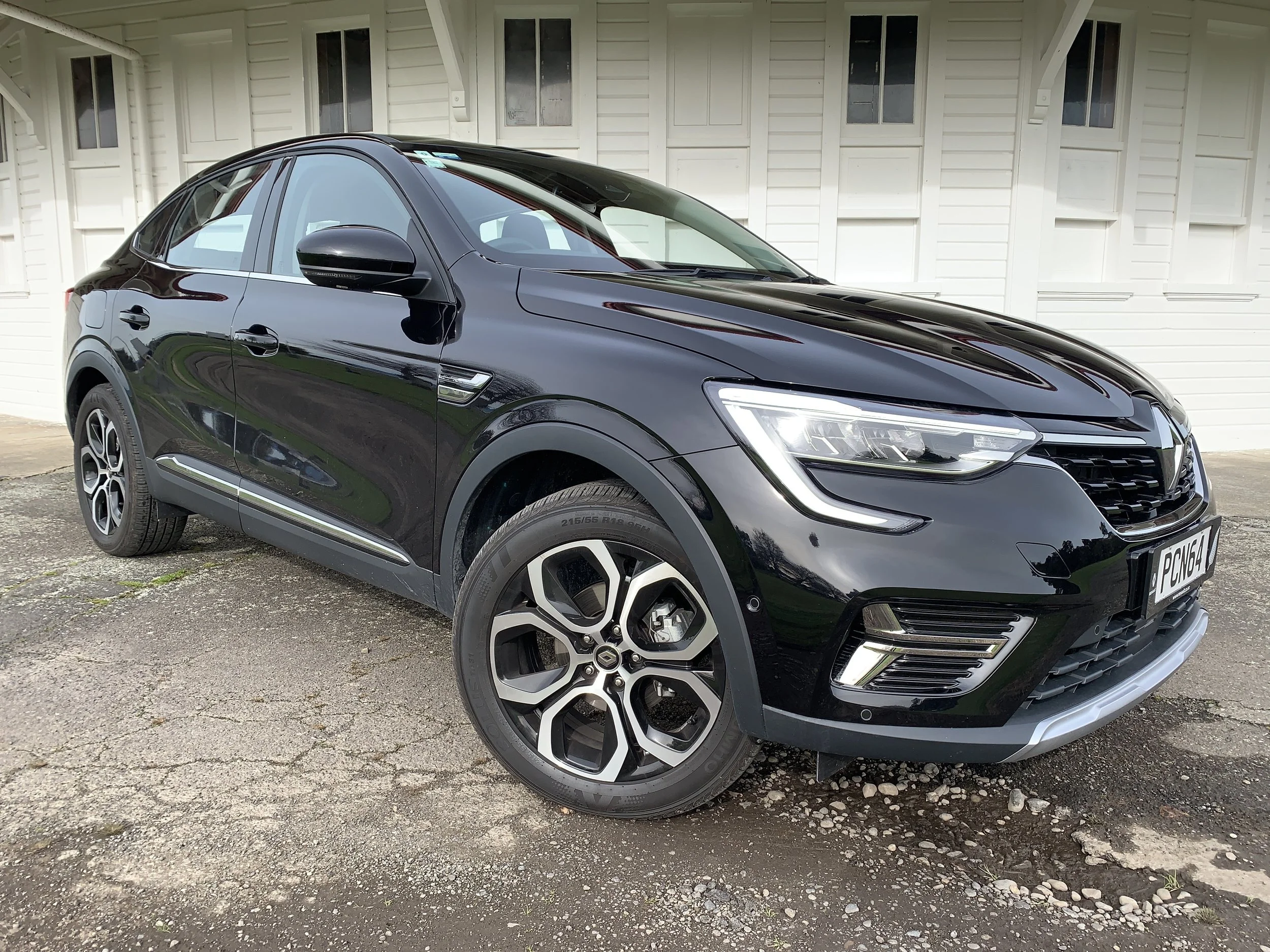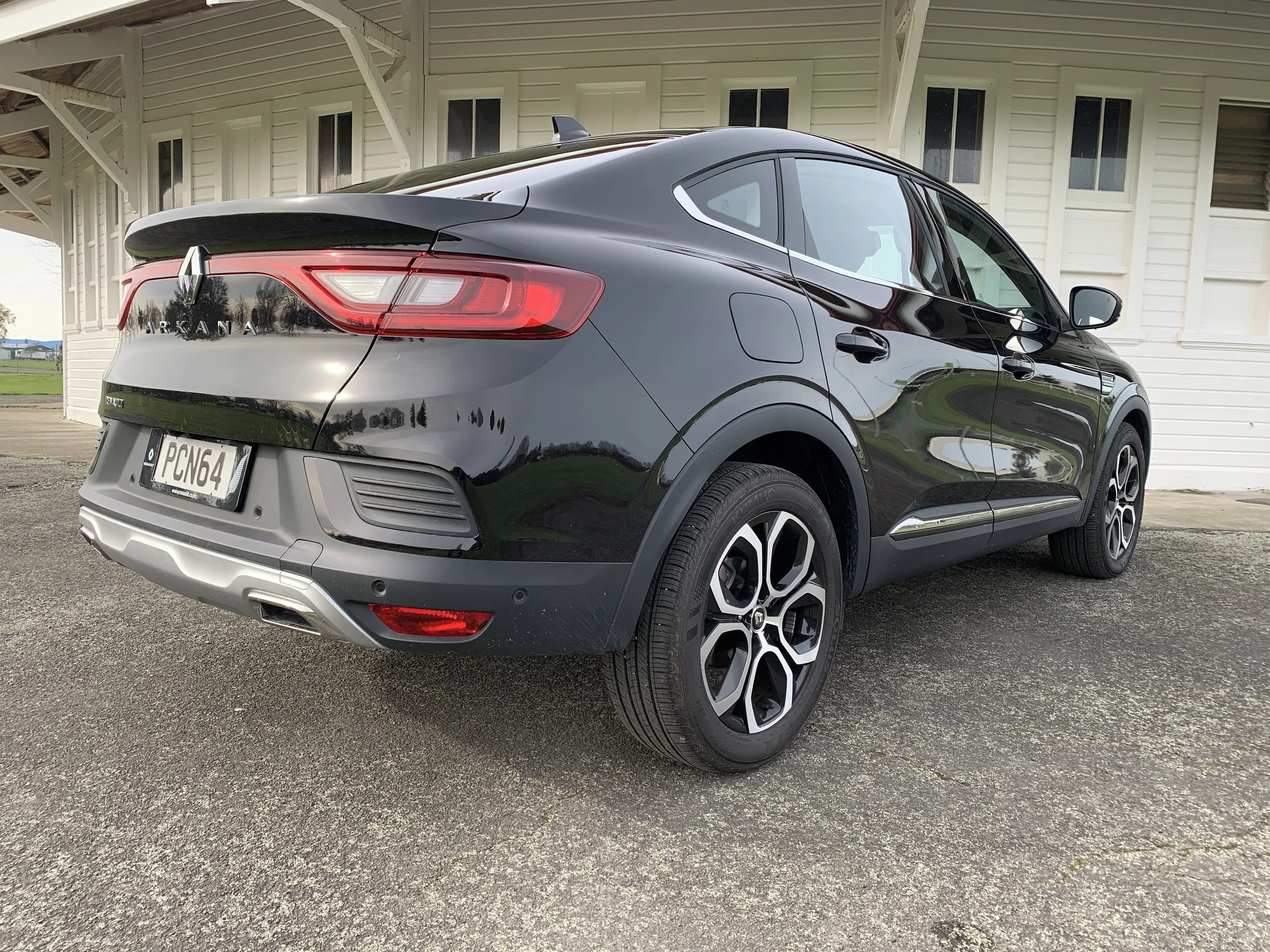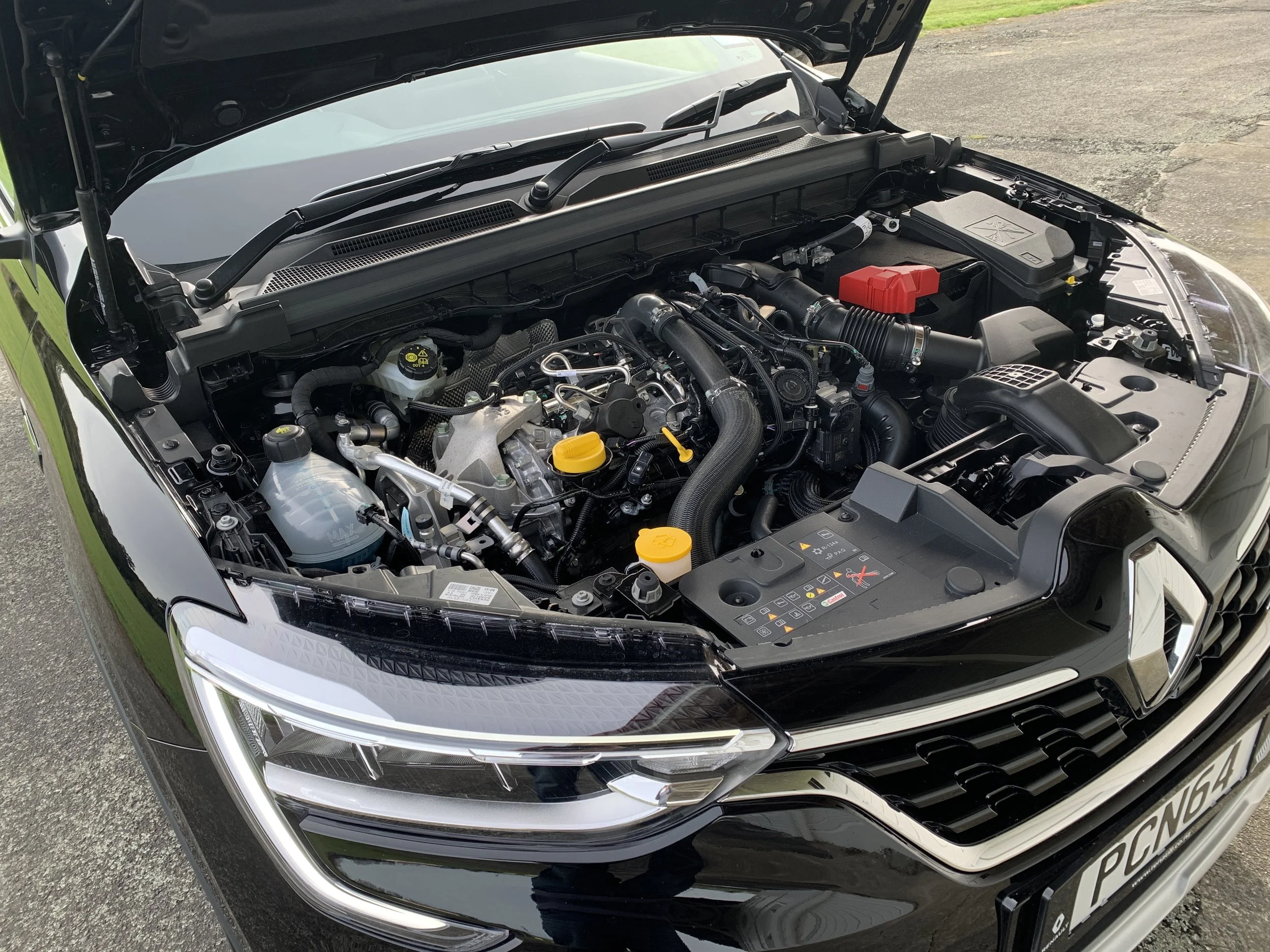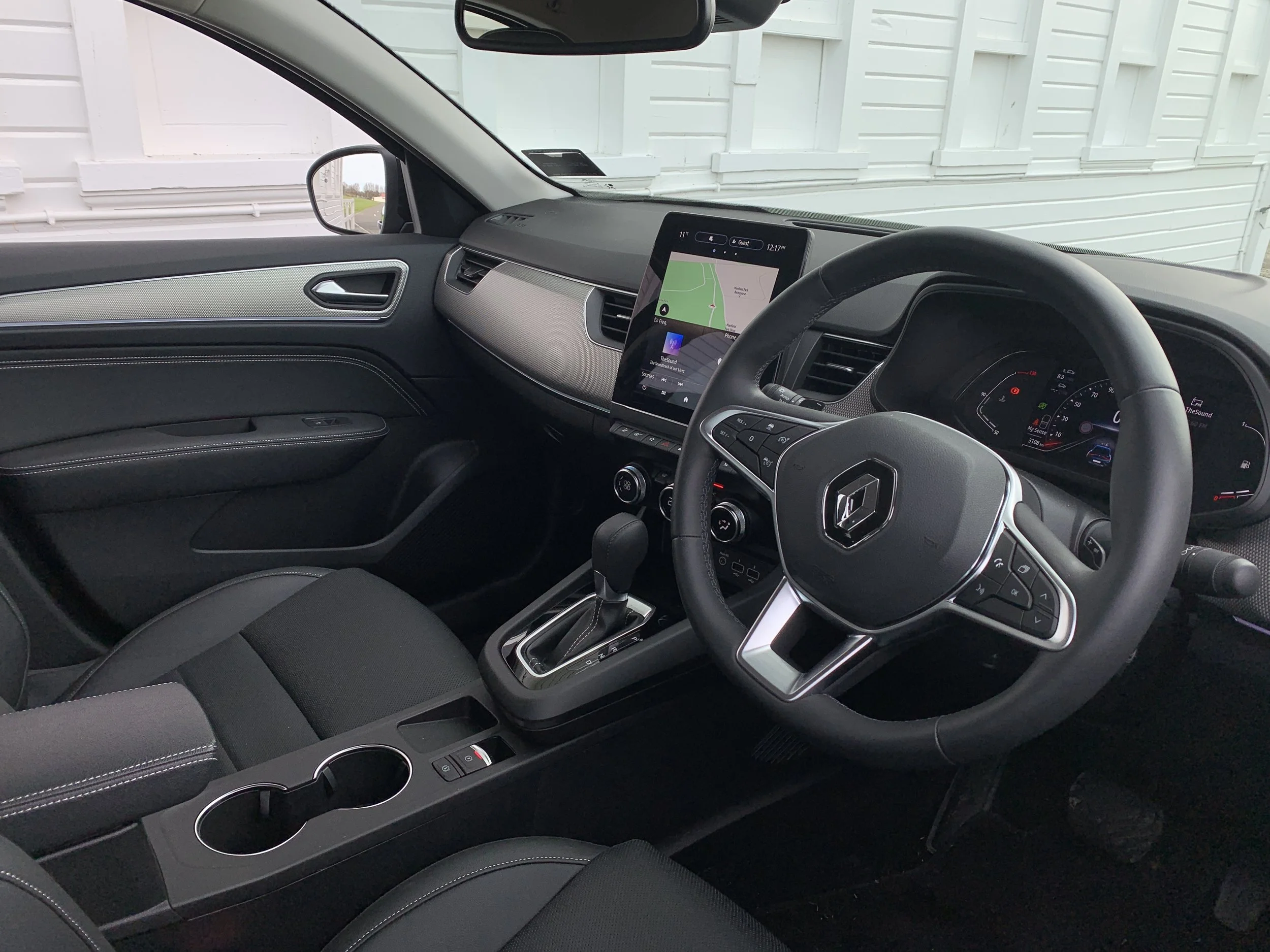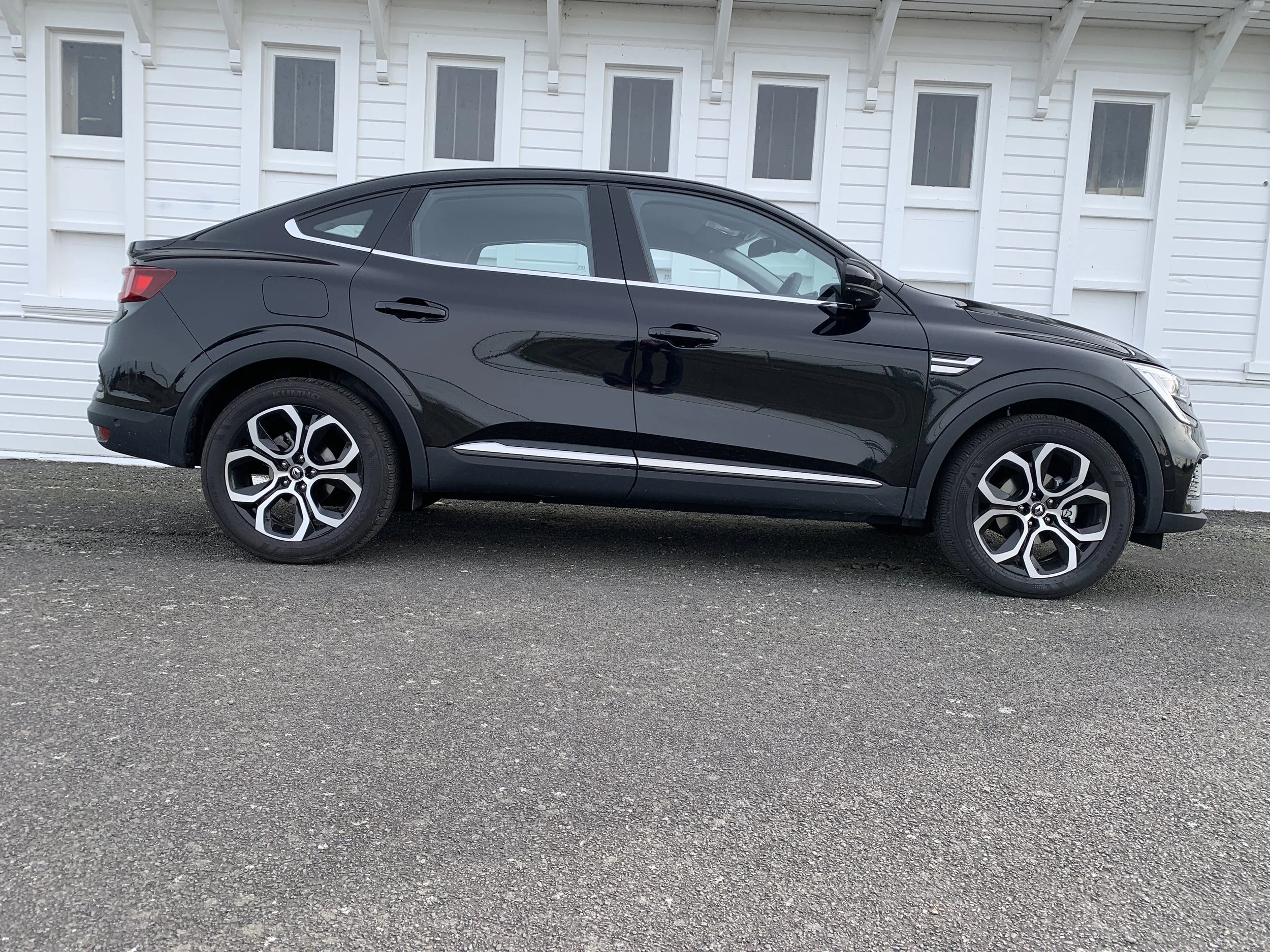Renault Arkana roadtest review: New world order
/The ‘Frenchness’ drives it; but underneath it all this is a more global proposition and that’s the bigger plus.
Price: $44,990.
Powertrain: 1333cc four-cylinder petrol, 115kW/262Nm, consumption 6.1 litres per 100km, seven speed direct shift automatic, front-wheel-drive.
Vital statistics: 4568mm long, 1821mm wide, 1571mm high, 2720mm wheelbase.
Likes: Smart styling, good spec, stands out as something different.
Not so much: Some hard plastics prevalent, no head up display.
HERE’S what we know about coupe crossovers: They’re all from exotic European brands, are uniformly expensive and have tendency to cruelly sacrifice practicality to the temple of sophisticated style.
Actually, that’s what we thought we knew.
Revision time. What holds true, to varying extent, in respect to even-numbered BMW X models, Mercedes GLC and a small tribe of Audi Sportbacks doesn’t necessarily adhere with conviction to the Renault Arkana.
On subject of roominess: Sure, it’s a compact car, but with consideration to it being in that category, even with its bowed roof, it’s still reasonably spacious and genuinely useful. As for the money? Well, this is a model spanning the $39,990 (Zen) to $44,990 (as tested Intens) band. Even though it’s not fully budget, it’s hardly eye-wateringly expensive either.
The European bit is where more allegiance to that high-end fare patently lays. The badge relates as much, mais non, and it all seems quite ‘French’ in design, material choice and, by and large, driving feel. More than enough chirpy chic to warrant it being a magnet for commentators to dust off all usual the tired clichés.
And there’s nothing wrong with the ‘French flair’ idealism being voiced and celebrated, so long as there’s also acknowledgement of the realities. These being that it speaks with a slightly South Korean accent, by virtue of the sole global birthplace being roughly halfway between here and Paris; the industrial city of Busan, South Korea. Funny how so many commentators seem to ignore this element. It’s almost as if they imagine it would ruin a good story?
Well, it doesn’t. Sourcing from South Korea is downright handy when car production in Europe is feeling heat. And, as you’d expect, those on the Samsung-Renault assembly line are a conscientious lot, not least when it comes down to ensuring good assembly quality. Not that this necessarily puts it ahead of Renaults made in France. As much as popular opinion might suggest reliability of French cars could be of concern, the data simply doesn’t support that view any more.
In respect to the background, there’s more to it. Arkana is a true example of modern car industry multiculturalism. You might know Renault, Nissan and Mitsubishi are partnered (‘married’ just seems the wrong word), that the French have a degree of dominance in respect to financial stake and shareholding, but in respect to technology influence, a lot comes from Nissan.
That’s how it goes here. Arkana sits prettily atop the latest CMF-B platform that underpins two other Renaults, several Nissans and the latest Mitsubishi Outlander, which trumps – but only just – today’s test car as the largest product on the platform.
Unwrapping emotional impact of that side of the story is secondary to coming to terms about how you feel about how it looks. It’s dramatic enough to become the primary consideration for selection or cold-shouldering.
The trend it plays off is well-established, tracing back to the original X6 of 2008, which spurred an entire paradigm change in the market. I attended the BMW’s global launch, appropriately run out of South Carolina (because the United States is production home to all BMW sports utilities), for the short-lived NZ edition of Top Gear, under orders to seek locals’ thought about what they made of the then highly-controversial silhouette. I got some great, highly colourful quotes.
Anyway, there are been others since – where Munich went, Ingolstadt and Stuttgart unsurprisingly followed with, respectively, a small tribe of Q-model Sportbacks and the GLC Coupe – but it has taken this long for a mainstream mass market European maker to also follow this route.
The core ethos for shaping up in this fashion has always been the same; the sloping rear roofline is all about lending impression of a more athletic ambience; a sportier quality.
In its stance and presence, Arkana does that job. I’m not sure it best interprets in black; the colour is such that it ‘hides’ some of the finer nuances of the design. But it is striking enough, all the same. The brand pitch about it being designed to pick up interest from those keen to move away from a small car and into the SUV space, but aren’t sure about making the full switch, and also want something a bit flairful, seems solid. I could see it doing just that.
The model initially spans two trim levels already familiar in the local brand lingo. In time a new configuration, R.S. Line, that lends a sporty ambience will arrive and, further afield, there’s a hybrid which sounds highly interesting, regardless it’s in the mild category so potentially will at best achieve the most modest Clean Car subsidy.
The sportiness that the shape suggests is not really supported by the powertrain provided just now. The 1.3-litre turbocharged four-cylinder, which fires power to the front wheels through a seven-speed dual-clutch automatic transmission, is a perky enough performer, but you’d call it enthusiastically energetic rather than an outright firebrand.
Still, like many modern small engines, it has enough zest to likely have some believing it is of larger capacity than is really the case, particularly if the drive modes are played with, as each discernibly impact drivetrain and steering characteristics.
Sport’s the one for free spirits. It emphatically sharpens throttle response and allows the engine to rev out a far more freely. Eco is a good go-to for urban dawdling. The interim and default is MySense; that’s simply Renault-speak for normal driving settings with options to customise steering and the digital instrument cluster.
Plant your right foot hard, and try and drive it like a hot-rod, and the engine will be as brisk and as playful as can be expected. The transmission, too, though one challenge with this box is that it can become overly keen to kick down a gear at times. It’s a habit only reined back by Eco mode, which though a necessity of the times and certainly the only accurate pathway to achieving the economy Renault cites, is just too dull to contemplate.
The Arkana doesn't spring any huge surprises when it comes to its overall driving experience, but there’s good balance to the chassis, the steering has a decent feel and there’s a likeability to its actions. Push too hard and, not unsurprisingly, it understeers; back off the throttle a touch and there's enough adjustability in it for a modicum of enjoyment. There’s no rancour to anything it does.
One aspect of its character untested on the media launch was its suitability for long distance driving. Not all small cars are cut out for it, but Euro fare does seem to punch above its weight. Arkana’s mixed upbringing certainly hasn’t hurt its wont for big driving adventure. It settled nicely into a day out exploring the 100kmh world. The ride quality was decent, so too the refinement; inevitably, there’s some surface-induced roar from coarse chip you need to deal with, but insofar as mechanical noise goes, intrusion is no great. Plus, though the seat is set a little too high for my tall frame, it has a solidly-sorted seat and the driving position is comfortable.
Given the coupe-wannabe styling, you’ll need to think a little about how ideal it will be as a family option; the roofline isn’t as extreme as some, but it obviously makes some impact.
The cabin’s cosiness becomes evident enough with four adults aboard but so long as any rear seat occupants aren’t overly tall, or suffer from claustrophobia, they’ll be fine and at least legroom is entirely competitive.
Though it’s deep and shallow, so you do have to lean in a bit, the boot is decent; 512 litres’ capacity at minimum, but the boot floor panel can be flipped upright, so that it divides the boot into sections. Fold the back seats (they split 60:40 and fold almost flat) and you've got 1269 litres to play with.
The roof shape’s compromise is obvious from the driver’s seat, thanks to that long, sloping D-pillar there’s a fair-sized over-shoulder blind-spot, though the side glass is quite generous and there’s a good quality reversing camera to help when in tight spaces.
The camera view displays on the car’s major interior focus point, a large central touch screen laid in portrait format; a design creativity that is hardly a Renault-ism, though the car does have some of those. The card-style key is one obvious one. This works in proximity, unlocking the Arkana as you approach, locking it again as you walk away, all without touching the key itself – which is a bit weird when you happen to have it in the driveway and are just passing by on some unrelated duty.
Another Renault-specific feature (or, at least, one I’ve not come across anywhere else) is the ability to control indicator volume. Plus, it also retains the weird audio volume and audio source alteration satellite control pad that all Renaults have had since … well, from my experience, at least the 1980s. This is sited behind the steering wheel in such a way to always been out of sight, so you need to learn its ways by touch.
That’s about as avant garde as it gets. Overall, the cabin is quite plain in its design, which means it's simple and easy to find your way around. Aside from a small switch to operate the parking brake, it’s fairly conventional, with the heating and air conditioning switchgear operated by rotary controls. There are also two cupholders (quite deep ones, so they'll hold bottles) and a small, but useful, storage box under the centre armrest. There's also a storage area beneath the centre stack, in front of the gear selector, and another small, shallow storage tray just behind the parking brake switch.
That keyless entry and start is standard Arkana. Both versions have a touchscreen LED headlights, alloy wheels, climate control and front, side and rear parking sensors but the Intens is the one to go for, as it adds a lot of handy kit for the modest premium. The additionals span from a more pleasing, in size and graphic display, 9.3-inch touchscreen that achieves an inbuilt satellite navigation you’ll never use if you have CarPlay. On that point, the phone apps integrate much better than they did Renault's previous large screen.
It also has a 7.0-inch driver display, moves from 17 to 18-inch alloys, has leather and suede upholstery, rear cross-traffic alert, electric front seats with heating and ventilation and a heated steering wheel.
The yet to show R.S. Line has all that and adds a sportier exterior styling with a unique front bumper and black and grey trim. The interior has dedicated leather and suede upholstery with red stitching, red-striped seat belts, a perforated leather steering wheel, carbon-effect trim for the dashboard, aluminium pedals and a frameless rear-view mirror.
It also includes wireless smartphone charging, unique 18-inch wheels with red accents, a sunroof, black leather and suede upholstery with red stitching, and rear privacy glass.
Active safety aids include autonomous emergency braking with pedestrian and cyclist detection, lane-keep assist, lane-departure warning, adaptive cruise control with stop and go, blind-spot monitoring, traffic-sign recognition and Easy Park Assist. The car has a five-star Euro NCAP/ ANCAP safety rating, based on the 2019 protocols. It scored highly in adult and child occupant protection and did well in vulnerable road user protection and decently for safety assist systems.
It’s not likely to be a common sight simply because Renault doesn’t have a big presence here, but I do quite like what it does, not least given the price position. There are certainly other rivals that cost more and deliver less than this stylish coupe-inspired twist on the crossover norm.

